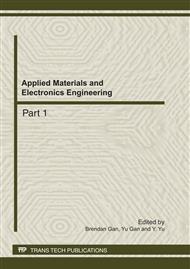p.539
p.543
p.549
p.553
p.557
p.561
p.565
p.569
p.575
Application of Signal Processing for Motor Condition Monitoring Based on Filtered-Signals and Eliminated-Signals
Abstract:
This paper proposes new procedures of motor fault detection. The proposed methods are based on filtered-signals and eliminated-signals. Generally, the raw stator phase currents collected from the motors are firstly filtered in order to get rid of measurement noises. If the new signals are called “Filtered-Signals” and the signals eliminated from the raw stator phase currents are called “Eliminated-Signals”. The first proposed procedure is to detect the motor faults by spectrum of PSD slope from the filtered-signals. The second proposed procedure is to detect the motor faults by spectrum of the eliminated-signals. The both methods are tested on 3 different motor conditions: healthy, stator fault, and rotor fault motor at full load condition. The experiments show that the both methods can differentiate conditions clearly and they also can indicate the levels of fault severity. Thus, it can be effective when the both methods are applied simultaneously to analyze the faults
Info:
Periodical:
Pages:
557-560
Citation:
Online since:
October 2011
Authors:
Price:
Сopyright:
© 2012 Trans Tech Publications Ltd. All Rights Reserved
Share:
Citation:


